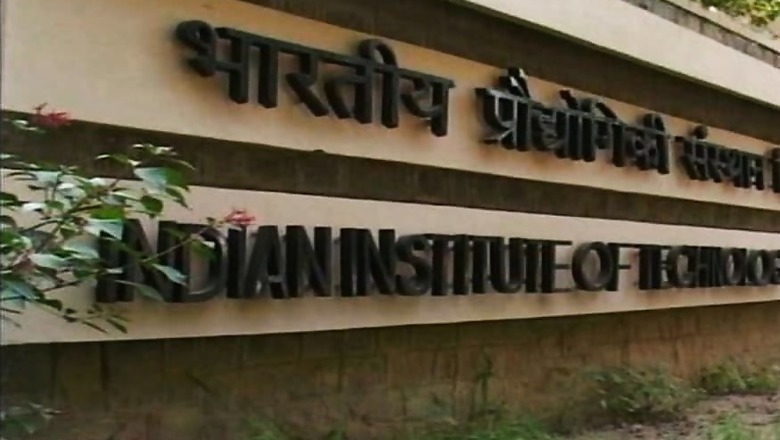
views
New Delhi: In 2016, the government in a statement to the Parliament said that over 50% of teaching positions are lying vacant at Indian Institutes of Technology (IIT). Cut to 2017, the situation seems to be no better and the centers of higher education in India are now scuttling here and there to bridge the gap between demand and supply.
No Strong Army of Gurus
The firsts of the IITs sprung up in Bombay, Madras, Kanpur, Kharagpur and Delhi, followed by Guwahati in 1994. In 2001 an IIT in Roorkee was created and the next batch was established in 2008 and 2009, which included Bhubaneswar, Gandhinagar, Hyderabad, Jodhpur, Patna, Ropar, Indore and Mandi. Benaras Hindu University (BHU) IIT was formed in 2012. The latest batch of IITs was announced over the last two years: Palakkad, Tirupati, Bhilai, Goa, Jammu, Dharwad and the Indian School of Mines, Dhanbad.
A look at numbers in IITs across the country does not paint a rosy picture. One of the first to be established, IIT Bombay is short of 389 teachers against the 1017 sanctioned by the ministry of human resource development.
In the national capital, IIT Delhi is short of at least 40% of the staff that it requires for its student strength.
Speaking to News 18, IIT Delhi director Prof V Ramgopal Rao, acknowledged there was a big divide between the number of teachers wanted and the actual strength.
“We’re short of 40% of what is needed. In next 5-7 years, for the 23 IITs the requirement of faculty will be of 5000. But in the next 20 years it will be more,” he said.
Worldwide Hunt For Teachers
While IIM Lucknow is all set to start a faculty development center, IIT Delhi conducted roadshows in July to attract a pool of talent to the IITs from across the world.
IIT Bombay has approached potential faculty candidates across the world, including those in other institutes and universities in the country.
The institute is also leveraging the help of alumni through its faculty alumni network to identify potential candidates. Rolling advertisements are being put up on websites and in newspapers.
“We also take the help of distinguished professors from top universities and industry professionals as adjunct and visiting faculty to fill the gap temporarily,” said source from IIT Bombay.
IIT Delhi, that is facing a shortage of 40% staff, sent a team to Harvard, MIT, Princeton, University of Houston, and Stanford University for attracting potential faculty candidate.
They ran an “Unlimited IIT Delhi” campaign in some of the best universities around the world to attract talent to the institute.
“We projected our achievement and also the facilities that come with being an IIT teacher,” Rao said.
The recruitment rules are generous —one can take up consultancy policies and yet be in IIT. Rao has rooted for international collaborations to solve this problem of shortage.
“There should be more fellowships for students to go abroad and study. There should be a talent pool from around the world,” he added. Though there is no permanent post for the overseas candidates, the faculty is working on contract for the same.
IIM Lucknow is also doing its best to fill the vacant posts. Professor Pushpendra Priyadarshi, associate professor (Human Resource Management), and also chairperson, corporate communication and media relations, said, “We are fully aware of the shortage, and are trying our level best. Quality of faculty is an issue. We are also in the process of setting up a Faculty Development Center at Noida to mitigate this problem. It will be launched on 5th September (Teachers Day).”
Beyond The Worrying Numbers
It has been observed by some in IITs that, in the past, 80% students would go to study in universities out of India and that number has declined in past 10 years due to opportunities in India.
“Older IITs like Kharagpur, Delhi, Bombay, Madras and Kanpur should have more students graduate armed with PhDs and serve as a faculty training institute,” Rao added.
There are many IITs that are in a ‘safe place’. While they have completed a round to recruit teachers for elective courses, IIT Palakkad is now looking at hunting faculty for specialized courses.
With the latest recruitment, their faculty strength will go to 40.
“Considering that we are only in the third year of establishment, we’re doing pretty fine,” said the director, prof. P.B. Sunil Kumar, adding that they may still need a few more teachers. “But for that we’ll turn to our mentor institution, IIT Madras,” he said.
Kumar was also quick to add that the institute did have problems in finding suitable faculty for particular courses. “There are some areas for which demand in the industry is high. We need highly motivated academicians for that. Not just IITs, many other places are on the lookout for such people,” he said.
Operating Systems, VLSI and Electrical Machines are some of the specialized areas where very few applications for teachers came up. The center had applicants from abroad, and many have been accepted.
The problem of shortage has not been faced by IIT Mandi and they attribute it to their academic culture, which is different from the rest.
Speaking to News18, director Timothy Gonsalves said, “We have an inter-disciplinary academic culture. The undergraduate programs are project oriented, which lay more emphasis on practical work than on lectures. We’re of the staunch belief that lectures, in the coming times, will become less relevant. Because of our emphasis on practicality, we need very few lecturers.”



















Comments
0 comment